Stryker
Improving Data Visualization for Fast-Paced Medical Environments. Saving Hospitals Millions.
A preventable problem
Hospitals across the United States struggle with the high-cost problem of hospital-acquired injuries (HAIs) suffered by patients in their care. In particular, hospital-acquired pressure injuries, more commonly referred to as bedsores or pressure ulcers, cost hospitals estimated billions of dollars annually. The human cost of these injuries compounds the problem: People go into the care of hospitals to get well, not to acquire additional injuries. Perhaps most frustrating for patients, hospital care-givers, and administrators alike is the fact that these injuries are almost entirely preventable.

Reframing the problem through the perspective of design
The Stryker Corporation, a Fortune 500 medical technology firm, has taken the challenge of eliminating HAIs head-on. Stryker’s high-end hospital beds are designed with automated features that intermittently reposition patients. When used in conjunction with standard best-practice nursing procedures, Stryker beds provide the value promise of being able to significantly decrease HAIs like pressure injuries.
For Stryker, making good on the value promise of their beds hinged on collecting accurate data that capture the degree to which caregivers routinely comply with the best-practice protocols necessary to optimize the bed’s features. Stryker also needed to present that compliance data back to the care facilities using their beds to demonstrate that protocol compliance in combination with the advanced bed features leads to fewer HAIs and ultimately saves hospitals money.
In the fall of 2018, ETR partnered with Stryker to take on this problem. In the end, we helped them understand why the biggest wins often come down to having a deep understanding of your end-users.
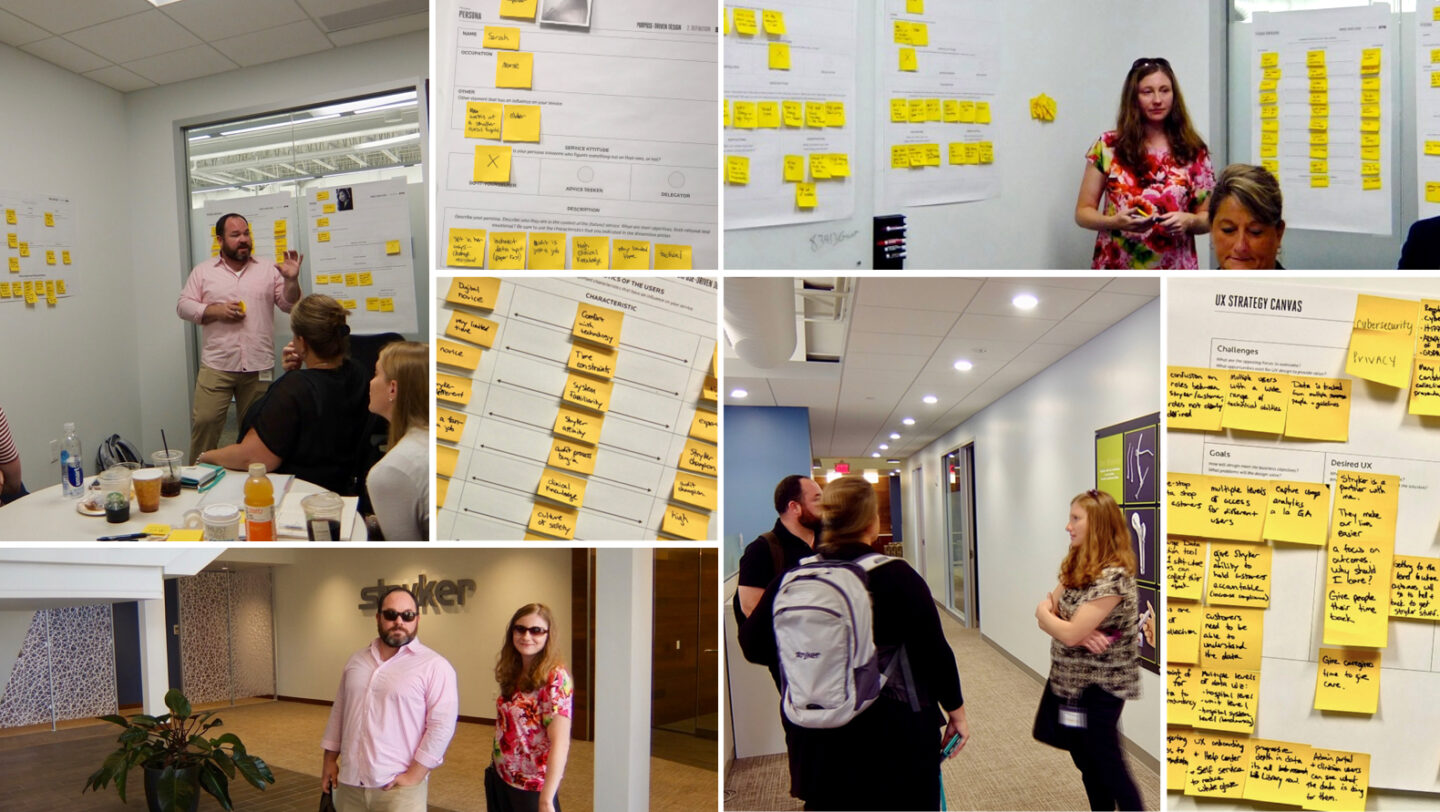
Teaching the importance of usability
When we first met with the product team at Stryker, they had already launched a pilot platform called Pressure Injury Prevalence Audit (PRIPA). Stryker intended for this platform to enable the collection of pressure injury data by caregivers and the creation of visually-driven reports based on that data by hospital administrators. The platform was dogged with usability and performance problems. As a result, it was largely unadopted by Stryker’s hospital customers.
ETR flew to Stryker headquarters in Kalamazoo, MI to conduct a two-day intensive, user-centered design workshop with the key stakeholders on the PRIPA initiative.
The goal of the workshop was twofold: To share our expertise and insights on user experience for effective data collection and visualization and to provide them with a core UX strategy that their internal design and IT teams could use as the foundation of PRIPAs redesign initiative.
Workshop Day One – Best Practices for Collecting and Reporting Accurate Data
The first day of the workshop was focused on providing a comprehensive knowledge-share and laying the foundation for a core UX design strategy.
We led the morning off with a prepared presentation around five UX best practices and principles around how users process information, the type of common errors people make and how to avoid them and understanding the proper application of user interface elements – all in the service of collecting accurate and actionable data.
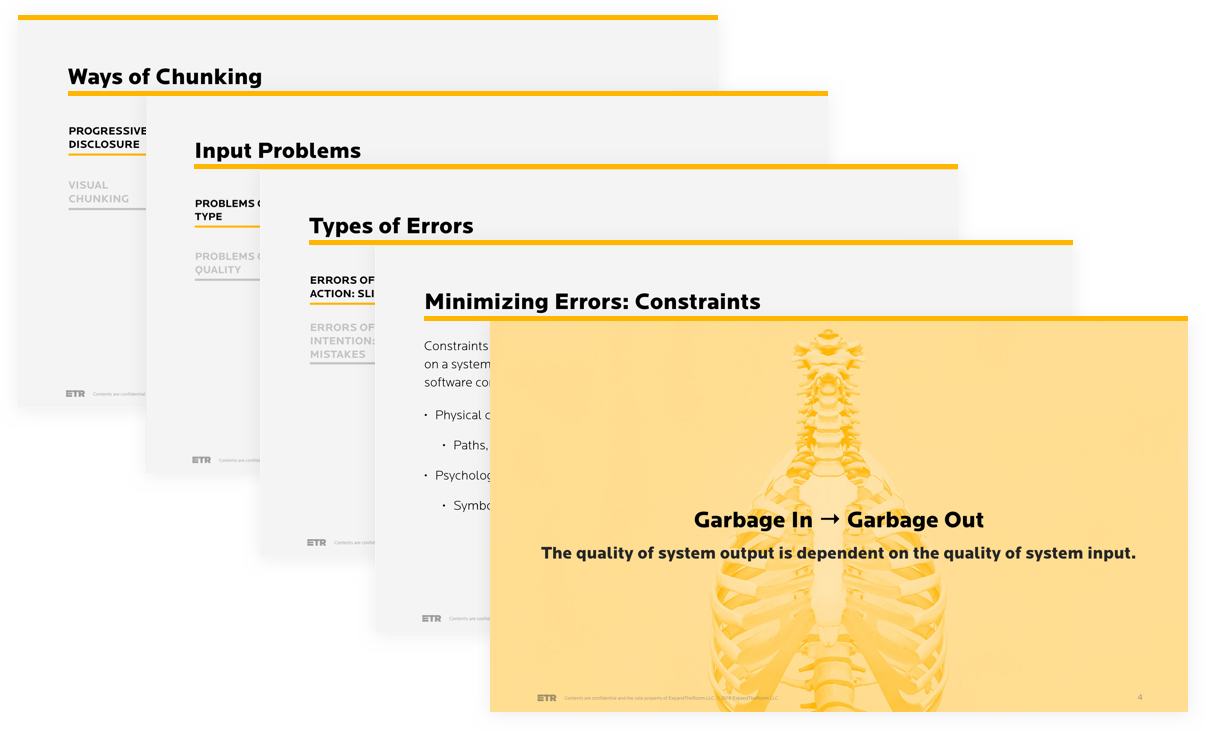
Our second presentation was around data reporting and visualization best practices and principles. We shared insights around how to effectively organize and visualize data, what type of chart or graph is best to visualize a given data set, and how to infuse data visualization with storytelling to make it more meaningful.
We dedicated the afternoon to a collaborative workshop that laid the framework for a comprehensive UX strategy that Stryker could use as a roadmap for the redesign and development of the PRIPA platform. Together, we populated our Purpose Driven Design UX Strategy Canvas designed to frame and contextualize the key pillars of the initiative. The canvas captured critical UX considerations such as business goals, user needs, service value proposition, and revenue channels.
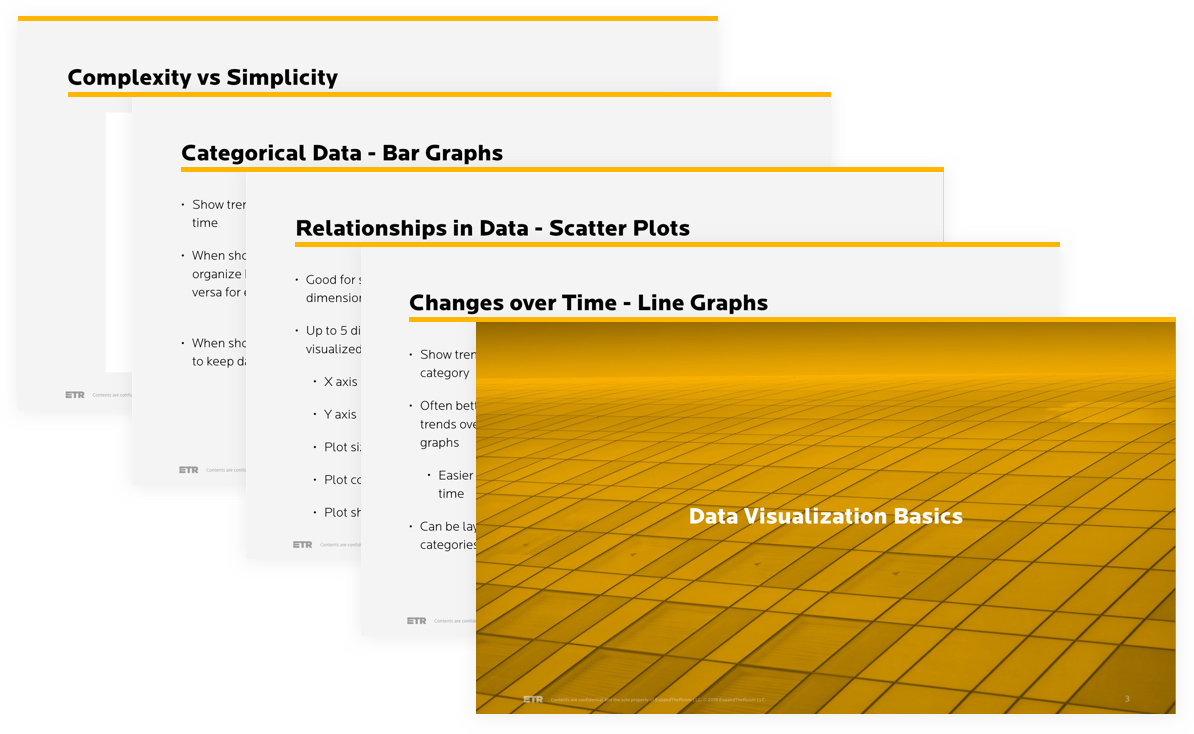
Workshop Day Two – Creating User Personas and Defining the Challenge
The second day of our workshop with Stryker was solely dedicated to immersive, collaborative UX strategy exercises.
We began the day with a two-part User Persona workshop. The first was focused on defining the most important and relevant attributes and characteristics to consider for the people using the PRIPA platform. These included such dimensions as proficiency with technology, openness to change and attitudes towards standard protocols and best practices.
With those Persona Dimensions defined and captured on our Purpose-Driven Design Persona Dimension Canvas, it was now time to flesh out a set of User Personas. Ultimately, we decide to create personas for three key user types:
- The nurses charged with collecting the data directly from their patients
- The nurse managers who are responsible for aggregating data from nurses into a single source of truth.
- The hospital administrators who are responsible for taking all of the aggregated data to generate and disseminate comprehensive reports which describe the impact of the data on the business side of hospitals.
We ultimately realized that the only reliable way to get nurses to embrace a new platform and adopt a new protocol was to demonstrate to them that they were getting time back to care for patients and not just being yoked with another administrative task.
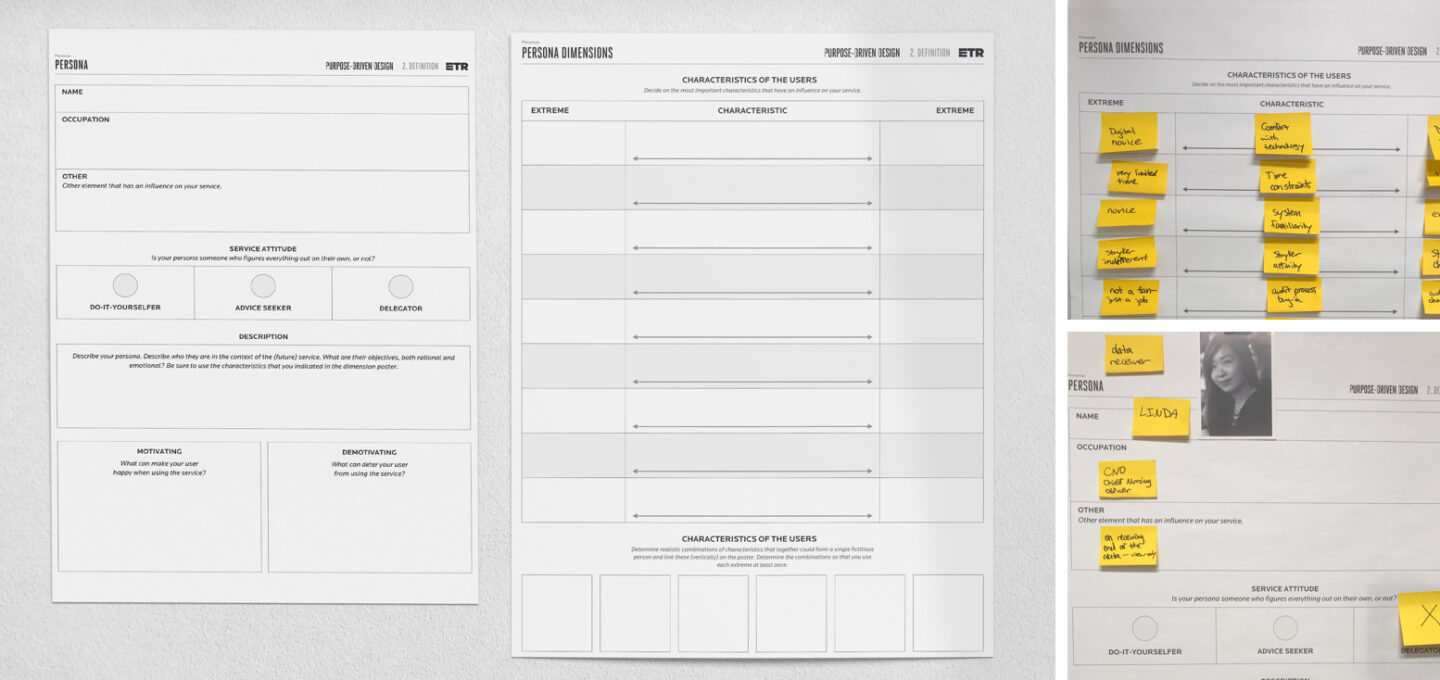
Armed with these insights from the persona work along with the foundational UX strategy work we had done the previous day, we spent the afternoon fleshing out a comprehensive UX strategy. We conducted a Design Challenge exercise to define the high-level business goals the PRIPA sought to address. We also identified who the most important users would be.
Finally, we formulated the following Design Challenge statement that defined what product our service would need to be created, who it would serve and how it would meet Stryker’s high-level business goals:
How might we design and build a scalable platform that provides for consistent and accurate data collection while putting the least possible burden on users?
How might such a platform best allow Stryker to uncover and articulate the story of customer success through better outcomes as a result of compliance with best practices?
With our Design Challenge in place, we turned our sights toward defining and prioritizing a core set of eight user-centered design requirements for the platform.
For example, the platform had to accommodate the input of error-free data by floor nurses as quickly and easily as possible in an on-the-go environment with constant interruptions and distractions. We also knew that the platform interface would need to be customizable to suit the needs of different end-user types.
Using our Purpose-Driven Design User-Centered Design Requirements Canvas we pared down about two dozen design requirements to the eight design requirements the team collectively considered the most essential to meeting the Design Challenge above.
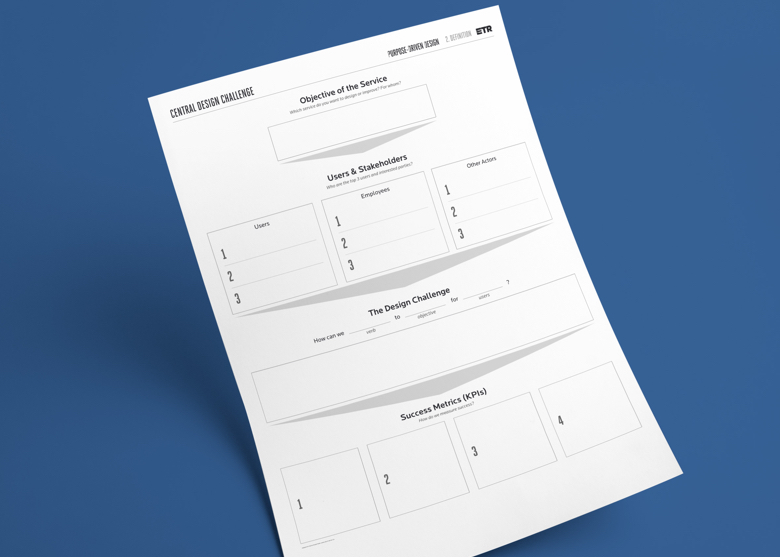
Results: A successful workshop leads to strategy improvements
After day-two of the Kalamazoo workshop, we collected all of our canvas posters, sticky notes, and Sharpies, and flew home. The following week, we presented our initial findings and creative direction strategy recommendations.
The two-day workshop with Stryker and the subsequent report was a resounding success. Our partners at Stryker obtained a great deal of valuable insight into the nuances and practical application of effective user experience design that is optimized for their specific end-users.
They also came out of it with a solid core UX strategy upon which they could execute their bold vision of helping hospitals significantly reduce hospital-acquired injuries.
Indeed, the workshop was so successful that Stryker extended the engagement twice. The follow-up was a deeper dive 8-week discovery effort to validate and further refine the design requirements identified in the workshop. At the conclusion of this collaborative work period, the Stryker team was able to take the strategy, creative direction, and requirements developed with ETR and build the final experience on their platform – paving the way for the improved adoption of this mission-critical tool.
Learn More About ETR Workshops
We offer a wide range of tailored, multi-day workshops and seminars. Drop us a line and we’ll tell you all about them!
We’d love to learn more about your needs and share our process on how we help organizations navigate initiatives just like this one.

